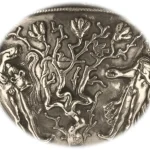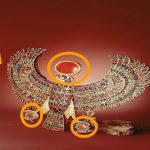Exhibited at the Shaanxi History Museum, the Tang Dynasty discovery at Caochangpo, which was unearthed in 1975, features a gilt bronze dragon with an iron core.
In the annals of Chinese history, few artifacts evoke the splendor and majesty of the Tang Dynasty like the Gilded Bronze Dragon with an iron core. Unearthed from the ancient site of Caochangpo in the southern suburb of Xian in 1975, this remarkable treasure now finds its home in the prestigious Shaanxi History Museum. Dating back to the 7th-10th century China, this masterpiece of Tang artistry serves as a tangible link to a golden age of Chinese civilization.
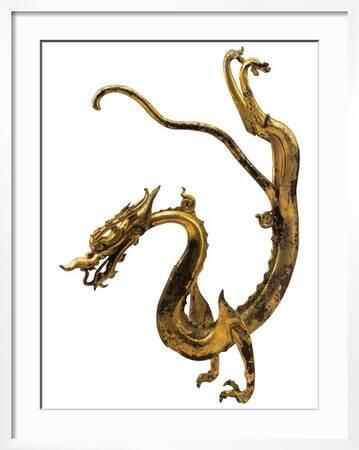
The Gilded Bronze Dragon, with its intricate detailing and masterful craftsmanship, stands as a testament to the artistic achievements of the Tang Dynasty. Cast from bronze and adorned with a layer of gilded gold, the dragon exudes an aura of power and elegance. Its sinuous body coils and twists in dynamic poses, its scales shimmering in the light as if alive with movement. With its piercing eyes and fearsome visage, the dragon commands awe and respect, embodying the mythical creatures of Chinese folklore.
But what sets this particular dragon apart is its iron core—an innovation that speaks to the technological prowess of Tang artisans. By incorporating an iron core into the bronze casting process, they were able to create a sculpture of unprecedented durability and strength. This fusion of bronze and iron not only enhanced the structural integrity of the dragon but also imbued it with a symbolic significance, representing the harmony of opposites and the unity of heaven and earth.
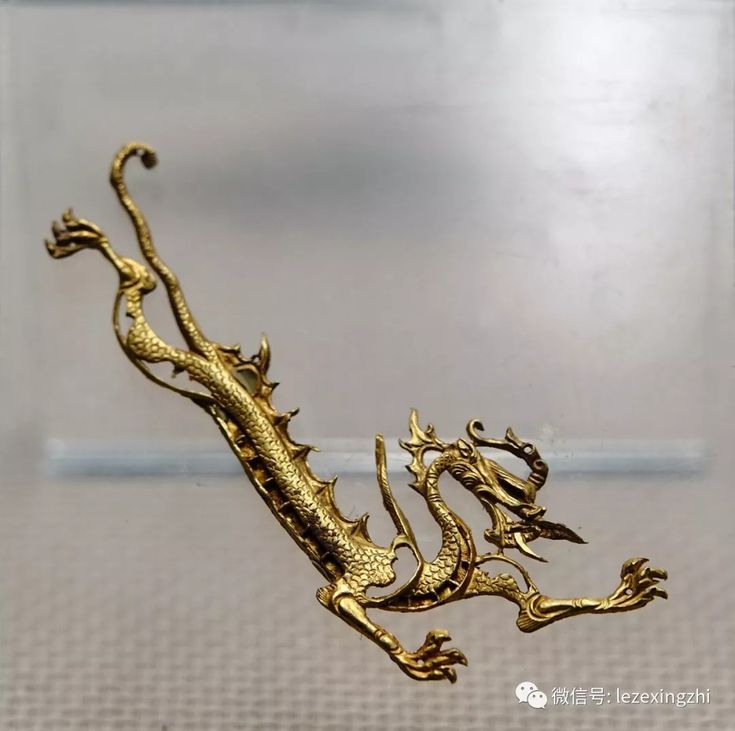
The discovery of the Gilded Bronze Dragon at Caochangpo in 1975 was a momentous event, shedding new light on the material culture of the Tang Dynasty. Excavations at the site revealed a wealth of artifacts, including pottery, bronze vessels, and funerary objects, providing valuable insights into the daily life and customs of Tang society. Among these treasures, the Gilded Bronze Dragon stood out as a masterpiece of Tang artistry, a symbol of imperial power and cultural sophistication.
Today, the Gilded Bronze Dragon holds pride of place in the Shaanxi History Museum, where it continues to captivate visitors from around the world. Its regal presence and exquisite beauty offer a window into the opulence and grandeur of the Tang court, where art and culture flourished under the patronage of enlightened rulers. As we gaze upon the dragon’s gleaming form, we are transported back in time to a golden age of Chinese civilization, where poetry, music, and the arts thrived.
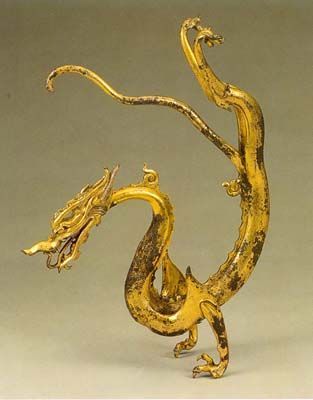
But the legacy of the Gilded Bronze Dragon extends beyond its aesthetic appeal—it also serves as a symbol of cultural exchange and influence. During the Tang Dynasty, China was a cosmopolitan hub of trade and diplomacy, attracting merchants, scholars, and travelers from across Asia and beyond. The dragon, with its associations of power and prosperity, became a potent symbol of Chinese identity, influencing artistic traditions throughout East Asia and beyond.
In conclusion, the Gilded Bronze Dragon with an iron core stands as a shining example of Tang artistry and ingenuity. From its humble origins in the southern suburb of Xian to its current home in the Shaanxi History Museum, it has journeyed through time, bearing witness to the rise and fall of empires. As we marvel at its beauty and craftsmanship, we are reminded of the enduring legacy of the Tang Dynasty and the profound impact of Chinese culture on the world stage.


